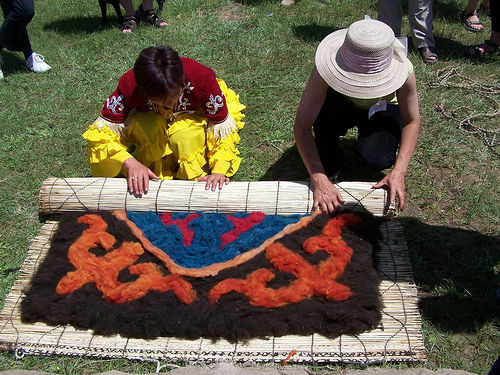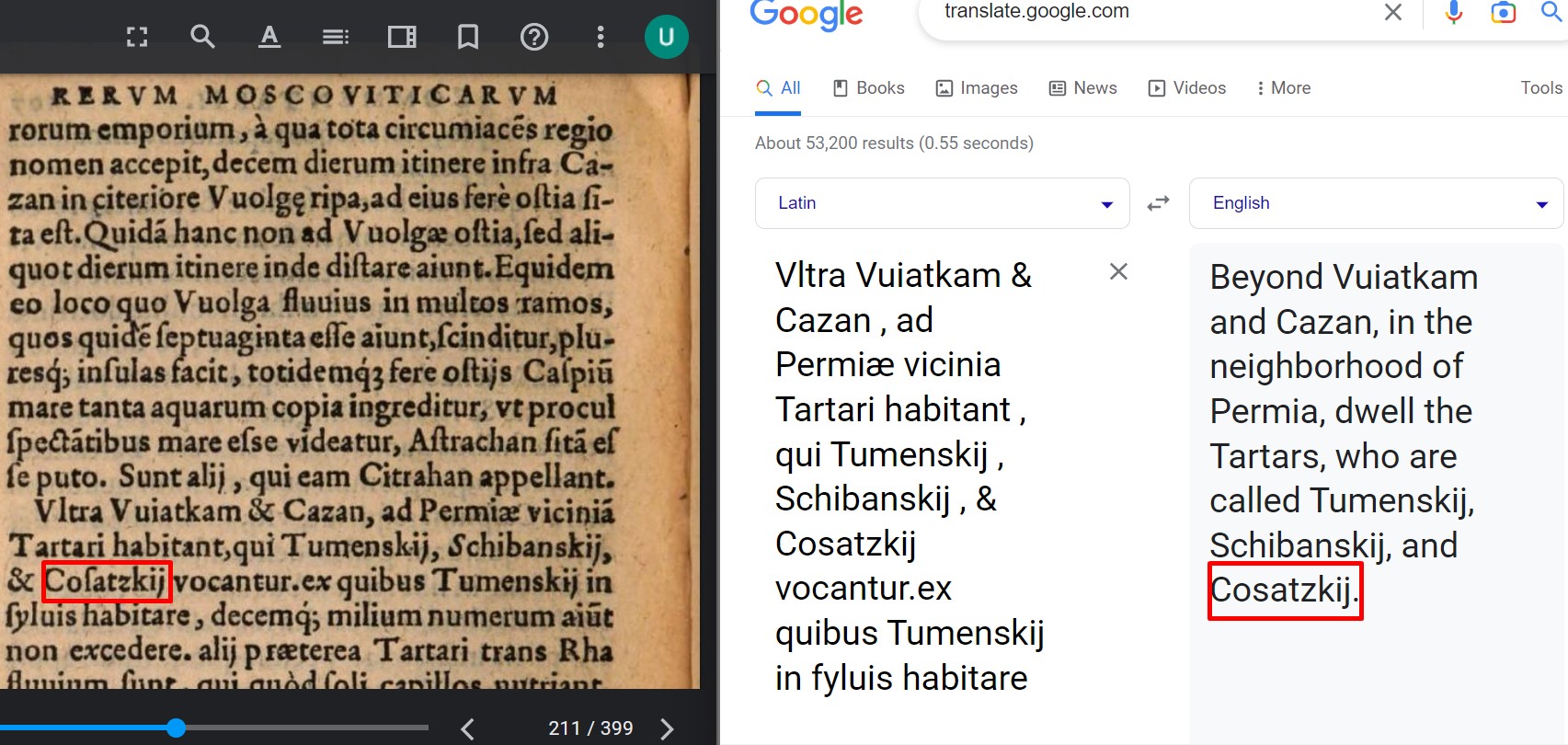|
Shyrdak
A shyrdak ( ky, шырдак, ) or syrmak ( kk, сырмақ, translit=syrmaq, ) is a stitched, and often colourful felt floor- and wallcovering, usually handmade in Central Asia. Kazakhs and Kyrgyz alike traditionally make shyrdaks, but especially in Kyrgyzstan, the tradition is kept alive, and products are also sold to tourists. In 2012, Kyrgyz felt carpets ala-kiyiz and shyrdak were inscribed into the UNESCO List of Intangible Cultural Heritage of Humanity in need of urgent protection. History The history of felt production in Eurasia can be traced to the end of Bronze Age when sheep, goat, and horse herding were common activities of nomadic farmers of the region. During the early Iron Age nomadic culture acquired its specific character, producing mobile tents covered with felt, weaponry, horse harnesses, specific clothing and items made of felt, hide, and wood. In the burial mounds of the mountainous Altai region, Eastern Kazakhstan and Mongolia, many households, farm ... [...More Info...] [...Related Items...] OR: [Wikipedia] [Google] [Baidu] |
Kyrgyzstani Culture
The culture of Kyrgyzstan has a wide mix of ethnic groups and cultures, with the Kyrgyz being the majority group. It is generally considered that there are 40 Kyrgyz clans, symbolized by the 40-rayed yellow sun in the center of the flag. The red lines inside the sun visualise the crown of a yurt, the traditional dwelling of nomadic farmers, once the main population of the Central Asian area. The dominant religion of Kyrgyzstan is Sunni Islam (91%). The Russian population is Russian Orthodox. Languages Kyrgyzstan is the only former Soviet Central Asian republic to start out with two official languages, in this case Russian and Kyrgyz. An aggressive post-Soviet campaign was established to make the latter the official national language in all commercial and government uses by 1997; Russian is still used extensively, and the non-Kyrgyz population, most not Kyrgyz speakers, are hostile to forcible ''Kyrgyzification''. Kyrgyzstan has a high literacy rate (99%), and a strong tradi ... [...More Info...] [...Related Items...] OR: [Wikipedia] [Google] [Baidu] |
Ala-kiyiz
Ala kiyiz ( ky, ала кийиз, ) or tekemet ( kk, текемет, ) is an ornamenting style for textile floor- or wallcovering made by pressing wet, soaped wool of various colours together to make it felt. The chemical process of felting transforms the loose woolen fibers into a thick cloth. The felt carpet-making technique is a traditional folk art among the nomadic farming Kazakh, Kyrgyz and Mongolian peoples of the Tien Shan mountains and the steppes in Central Asia for over two and a half thousand years. From the various methods of ornamenting, ala kiyiz is among the widest spread, with shyrdak. The motley felts traditionally were made from local sheep’s wool of autumn shearing, the carpets are a component of the insulation and decoration of the yurt or ger, a movable round tent that is the nomadic dwelling throughout Central Asia. In 2012, Kyrgyz felt carpets ala-kiyiz and shyrdak were inscribed into the UNESCO List of Intangible Cultural Heritage of Humanity in ne ... [...More Info...] [...Related Items...] OR: [Wikipedia] [Google] [Baidu] |
UNESCO Intangible Cultural Heritage Lists
UNESCO established its Lists of Intangible Cultural Heritage with the aim of ensuring better protection of important intangible cultural heritages worldwide and the awareness of their significance.Compare: This list is published by the Intergovernmental Committee for the Safeguarding of Intangible Cultural Heritage, the members of which are elected by State Parties meeting in a General Assembly. Through a compendium of the different oral and intangible treasures of humankind worldwide, the programme aims to draw attention to the importance of safeguarding intangible heritage, which UNESCO has identified as an essential component and as a repository of cultural diversity and of creative expression. The list was established in 2008 when the 2003 Convention for the Safeguarding of the Intangible Cultural Heritage took effect. the programme compiles two lists. The longer, Representative List of the Intangible Cultural Heritage of Humanity, comprises cultural "practices and express ... [...More Info...] [...Related Items...] OR: [Wikipedia] [Google] [Baidu] |
Kyrgyzstan
Kyrgyzstan,, pronounced or the Kyrgyz Republic, is a landlocked country in Central Asia. Kyrgyzstan is bordered by Kazakhstan to the north, Uzbekistan to the west, Tajikistan to the south, and the People's Republic of China to the east. Its capital and largest city is Bishkek. Ethnic Kyrgyz make up the majority of the country's seven million people, followed by significant minorities of Uzbeks and Russians. The Kyrgyz language is closely related to other Turkic languages. Kyrgyzstan's history spans a variety of cultures and empires. Although geographically isolated by its highly mountainous terrain, Kyrgyzstan has been at the crossroads of several great civilizations as part of the Silk Road along with other commercial routes. Inhabited by a succession of tribes and clans, Kyrgyzstan has periodically fallen under larger domination. Turkic nomads, who trace their ancestry to many Turkic states. It was first established as the Yenisei Kyrgyz Khaganate later i ... [...More Info...] [...Related Items...] OR: [Wikipedia] [Google] [Baidu] |
Tourists
Tourism is travel for pleasure or business; also the theory and practice of touring (other), touring, the business of attracting, accommodating, and entertaining tourists, and the business of operating tour (other), tours. The World Tourism Organization defines tourism more generally, in terms which go "beyond the common perception of tourism as being limited to holiday activity only", as people "travelling to and staying in places outside their usual environment for not more than one consecutive year for leisure and not less than 24 hours, business and other purposes". Tourism can be Domestic tourism, domestic (within the traveller's own country) or International tourism, international, and international tourism has both incoming and outgoing implications on a country's balance of payments. Tourism numbers declined as a result of a strong economic slowdown (the late-2000s recession) between the second half of 2008 and the end of 2009, and in consequence of t ... [...More Info...] [...Related Items...] OR: [Wikipedia] [Google] [Baidu] |
Central Asia
Central Asia, also known as Middle Asia, is a region of Asia that stretches from the Caspian Sea in the west to western China and Mongolia in the east, and from Afghanistan and Iran in the south to Russia in the north. It includes the former Soviet republics of Kazakhstan, Kyrgyzstan, Tajikistan, Turkmenistan, and Uzbekistan, which are colloquially referred to as the "-stans" as the countries all have names ending with the Persian suffix " -stan", meaning "land of". The current geographical location of Central Asia was formerly part of the historic region of Turkistan, also known as Turan. In the pre-Islamic and early Islamic eras ( and earlier) Central Asia was inhabited predominantly by Iranian peoples, populated by Eastern Iranian-speaking Bactrians, Sogdians, Chorasmians and the semi-nomadic Scythians and Dahae. After expansion by Turkic peoples, Central Asia also became the homeland for the Kazakhs, Uzbeks, Tatars, Turkmen, Kyrgyz, and Uyghurs; Turkic langua ... [...More Info...] [...Related Items...] OR: [Wikipedia] [Google] [Baidu] |
Kazakhstani Culture
Kazakhstan has a well-articulated culture based on the nomadic pastoral economy of the inhabitants. Islam was introduced to Kazakhstan in the 7th to 12th centuries. Besides lamb, many other traditional foods retain symbolic value. Kazakh culture is largely influenced by the Turkic nomadic lifestyle. It also seems to be strongly influenced by the nomadic Scythians. Because animal husbandry was central to the Kazakhs' traditional lifestyle, most of their nomadic practices and customs relate in some way to livestock. Traditional curses and blessings invoked disease or fertility among animals, and good manners required that a person ask first about the health of a man's livestock when greeting him and only afterward inquire about the human aspects of his life. The traditional Kazakh dwelling is the ''yurt'', a tent consisting of a flexible framework of willow wood covered with varying thicknesses of felt. The open top permits smoke from the central hearth to escape; temperature and d ... [...More Info...] [...Related Items...] OR: [Wikipedia] [Google] [Baidu] |
Ethnic Kyrgyz Culture
An ethnic group or an ethnicity is a grouping of people who identify with each other on the basis of shared attributes that distinguish them from other groups. Those attributes can include common sets of traditions, ancestry, language, history, society, culture, nation, religion, or social treatment within their residing area. The term ethnicity is often times used interchangeably with the term nation, particularly in cases of ethnic nationalism, and is separate from the related concept of races. Ethnicity may be construed as an inherited or as a societally imposed construct. Ethnic membership tends to be defined by a shared cultural heritage, ancestry, origin myth, history, homeland, language, or dialect, symbolic systems such as religion, mythology and ritual, cuisine, dressing style, art, or physical appearance. Ethnic groups may share a narrow or broad spectrum of genetic ancestry, depending on group identification, with many groups having mixed genetic ancestry. Ethnic g ... [...More Info...] [...Related Items...] OR: [Wikipedia] [Google] [Baidu] |
Kazakhs
The Kazakhs (also spelled Qazaqs; Kazakh: , , , , , ; the English name is transliterated from Russian; russian: казахи) are a Turkic-speaking ethnic group native to northern parts of Central Asia, chiefly Kazakhstan, but also parts of northern Uzbekistan and the border regions of Russia, as well as Northwestern China (specifically Ili Kazakh Autonomous Prefecture) and Mongolia (Bayan-Ölgii Province). The Kazakhs are descendants of the ancient Turkic Kipchaks, Kipchak tribes and the medieval Mongolic peoples, Mongolic tribes, and generally classified as Turco-Mongol tradition, Turco-Mongol cultural group. Kazakh identity is of Middle Ages, medieval origin and was strongly shaped by the foundation of the Kazakh Khanate between 1456 and 1465, when following disintegration of the Golden Horde, several tribes under the rule of the sultans Janibek Khan, Janibek and Kerei Khan, Kerei departed from the Khanate of Abu'l-Khayr Khan in hopes of forming a powerful khanate of ... [...More Info...] [...Related Items...] OR: [Wikipedia] [Google] [Baidu] |



.png)

.png)

